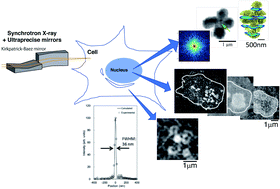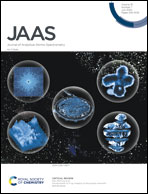Development of X-ray imaging of intracellular elements and structure
Abstract
The desire to see the smallest possible objects, such as the contents of cells, reflects our intellectual curiosity and has resulted in the development of various types of microscopes. Microscopes using an X-ray source were developed after Röntgen's discovery of X-rays in 1895. Röntgen rays were first used for photography in 1896 and for observation of the structural details of biological samples in the 1900s. This use of X-rays grew considerably following the development of X-ray optics such as diffractive lenses and total-reflection mirrors in the late 1940s. X-ray microscopy theoretically has better resolution than that of visible light (400–700 nm) microscopy and has developed differently from both visible light and electron microscopy due to the penetration ability of X-rays. The third-generation synchrotron radiation facilities that produce higher electron beam energies promoted X-ray microprobes for various types of microscopies. The accompanying development of X-ray focusing systems has led to today's submicron X-ray probes, which have high enough resolution for imaging cells at the organelle level. In this review, we describe the imaging technologies using synchrotron X-ray fluorescence by means of a sub-100 nm focusing system and X-ray diffraction, which facilitates the determination of the cellular elemental distribution and structure.



 Please wait while we load your content...
Please wait while we load your content...